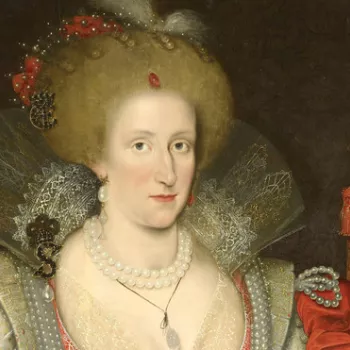Toilet service hallmarks 1699-1824
Box of purplewood, rosewood, stained wood and gilt bronze with velvet lining. Toilet service of silver gilt and glass | RCIN 50478
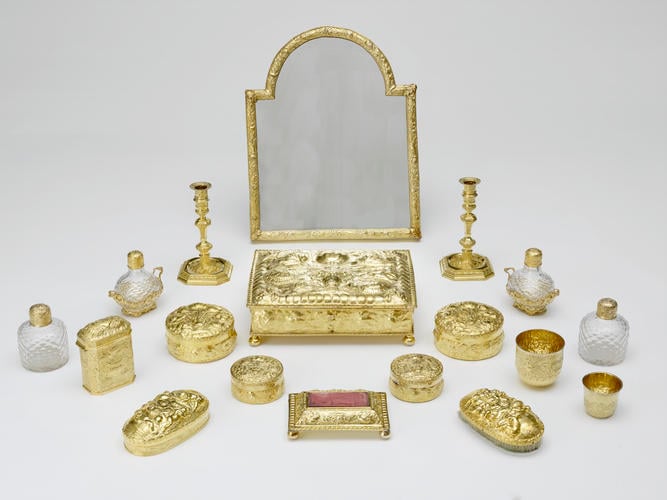
Edward Farrell
Toilet service hallmarks 1699-1824
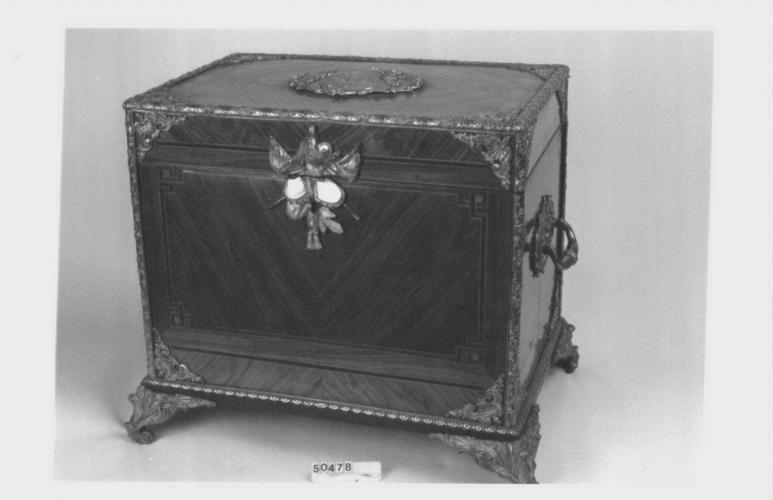
Edward Farrell
Master: Toilet service Item: Box hallmarks 1699-1824
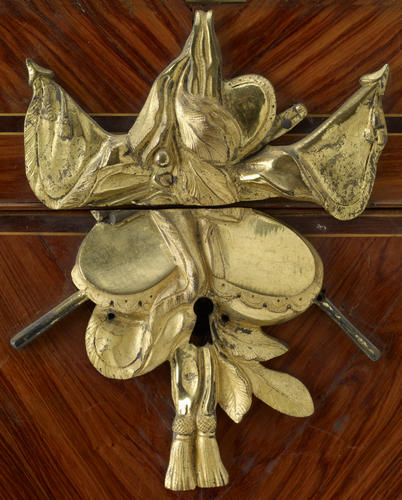
Edward Farrell
Master: Toilet service Item: Box hallmarks 1699-1824

Edward Farrell
Toilet service hallmarks 1699-1824

Edward Farrell
Master: Toilet service Item: Mirror hallmarks 1699-1824
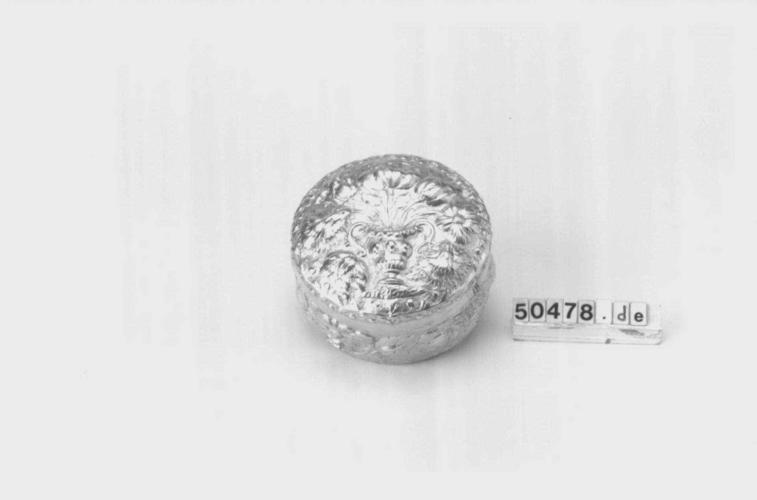
Edward Farrell
Master: Toilet service Item: Cover for circular box hallmarks 1699-1824
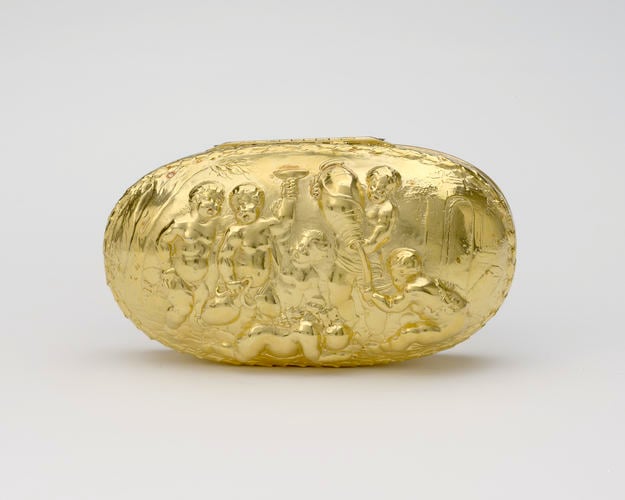
Edward Farrell
Master: Toilet service Item: Clothes brush hallmarks 1699-1824
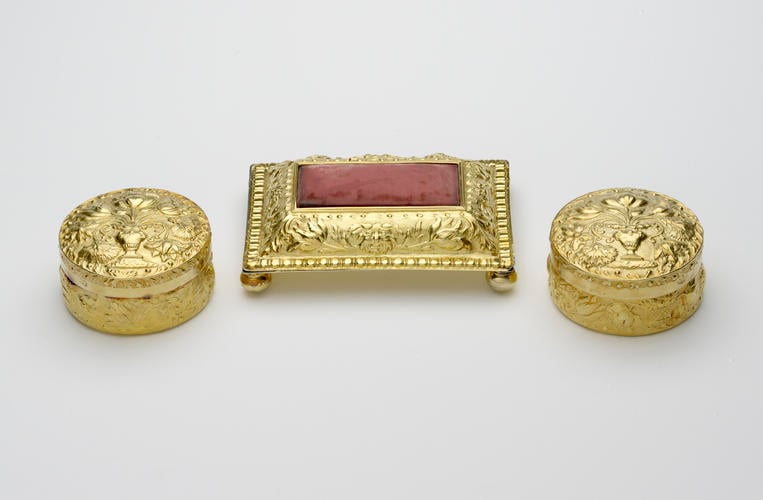
Edward Farrell
Master: Toilet service Item: Cover for small circular box hallmarks 1699-1824
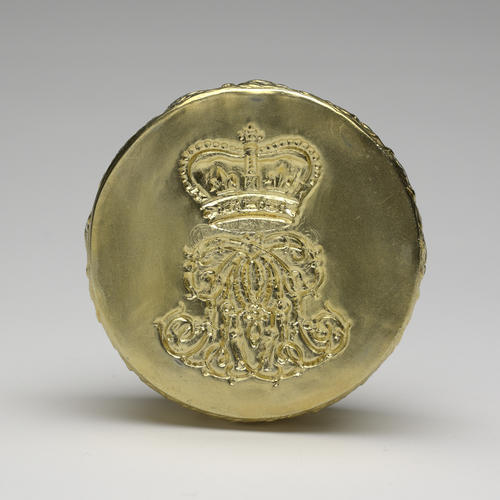
Edward Farrell
Master: Toilet service Item: Cover for small circular box hallmarks 1699-1824
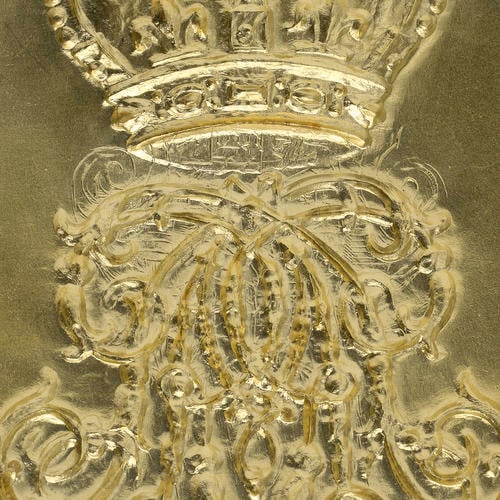
Edward Farrell
Master: Toilet service Item: Cover for small circular box hallmarks 1699-1824
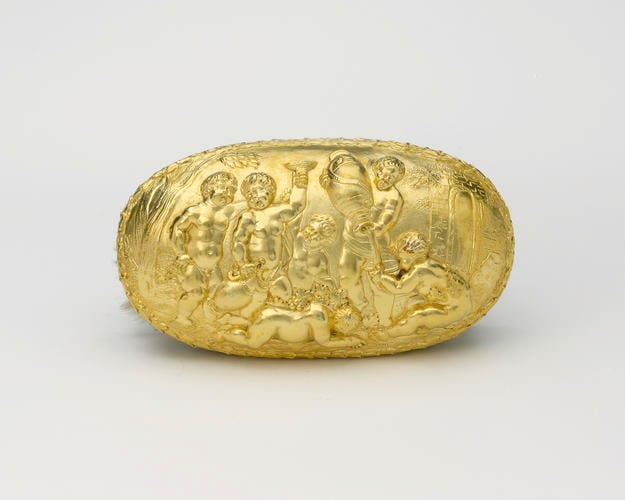
Edward Farrell
Master: Toilet service Item: Oval box hallmarks 1699-1824

Edward Farrell
Master: Toilet service Item: Cover for bottle hallmarks 1699-1824
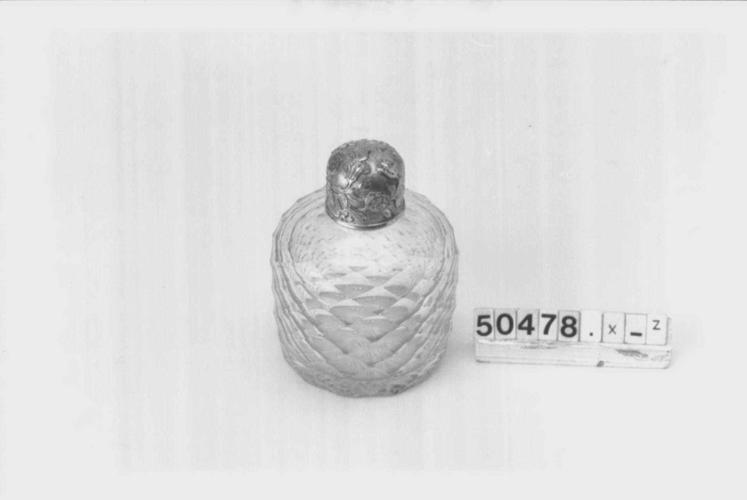
Edward Farrell
Master: Toilet service Item: Cover for bottle hallmarks 1699-1824

Edward Farrell
Master: Toilet service Item: Large Beaker hallmarks 1699-1824

Edward Farrell
Toilet service hallmarks 1699-1824

Edward Farrell
Master: Toilet service Item: Small Beaker hallmarks 1699-1824

Edward Farrell
Master: Toilet service Item: Jewel Casket hallmarks 1699-1824

Edward Farrell
50478.an-ao.jpg hallmarks 1699-1824


















-
Purplewood travelling box, with rosewood and stained wood stringing and gilt bronze mounts, lined with blue velvet, containing a silver-gilt toilet service, embossed and chased with foliate and floral motifs, putti and crowned M monograms. The service comprises a mirror, one rectangular box, two large round boxes, two smaller round boxes, one oval box, a pincushion, a clothes brush, one container and two scent bottles, a large beaker, a small beaker, two glass bottles with silver-gilt lids, two oval bottles with silver-gilt lids, two candlesticks and two oval baskets. This toilet service is a composite service, made from many different components dating from between 1699 and 1824. Most pieces are English, but the small beaker is French, and the two baskets are Dutch in origin. Most pieces are chased in a late-seventeenth century style and lots are chased with an 'MR' cypher, but much of this chasing was added later, as the service did not belong to Mary II.
Provenance
This toilet service was originally bought by Frederick, Duke of York, for about £250 in 1824-5, from the retailer Kensington Lewis. The Duke of York often patronised Lewis and his trade cards from this date read, 'Kens Lewis / Silversmith and Jeweller / to His R.H. The Duke of York / St James's St, Corner of Rider St / A Large Assortment of Antique and Secondhand Plate in General'. Lewis employed the talented goldsmith Edward Farrell and the two men specialised in historic plate. This service was probably put together by Lewis from items he had in stock and new bottles which he commissioned to fit existing silver-gilt containers, and then chased to match by Farrell, who probably also added the MR cyphers. It was later purchased by George IV at the sale of Frederick, Duke of York's goods at Christie's, in March 1827, for £500 10s. Some of Farrell's most original and sculptural works were created for the Duke of York and retailed through Kensington Lewis. After the Duke of York's death in 1827, Lewis's business failed and the two men parted ways, neither achieving a level of success similar to that they enjoyed while patronised by the Duke of York.
-
Creator(s)
(goldsmith)(goldsmith)(goldsmith)(goldsmith)(goldsmith)Acquirer(s)
-
Medium and techniques
Box of purplewood, rosewood, stained wood and gilt bronze with velvet lining. Toilet service of silver gilt and glass




